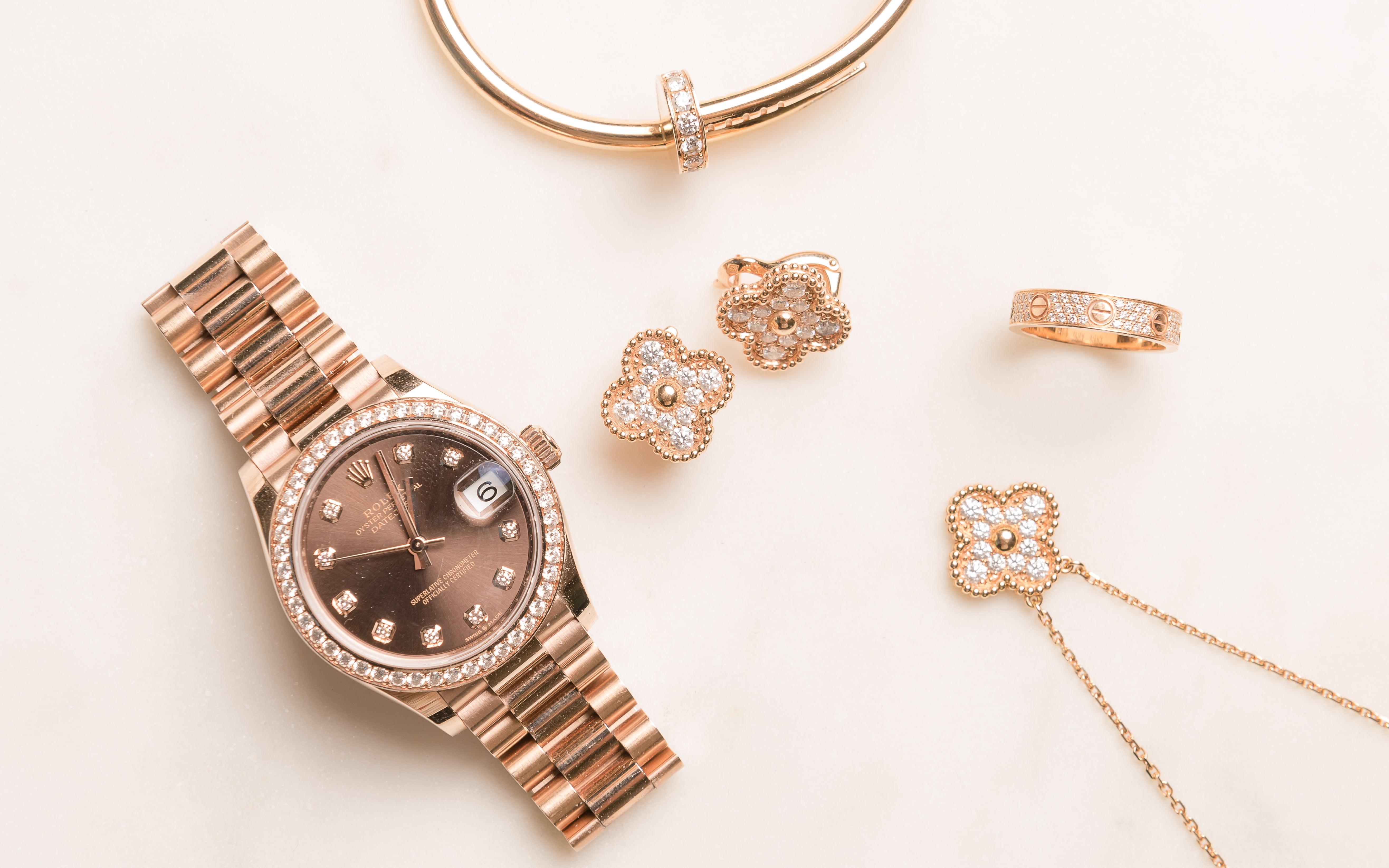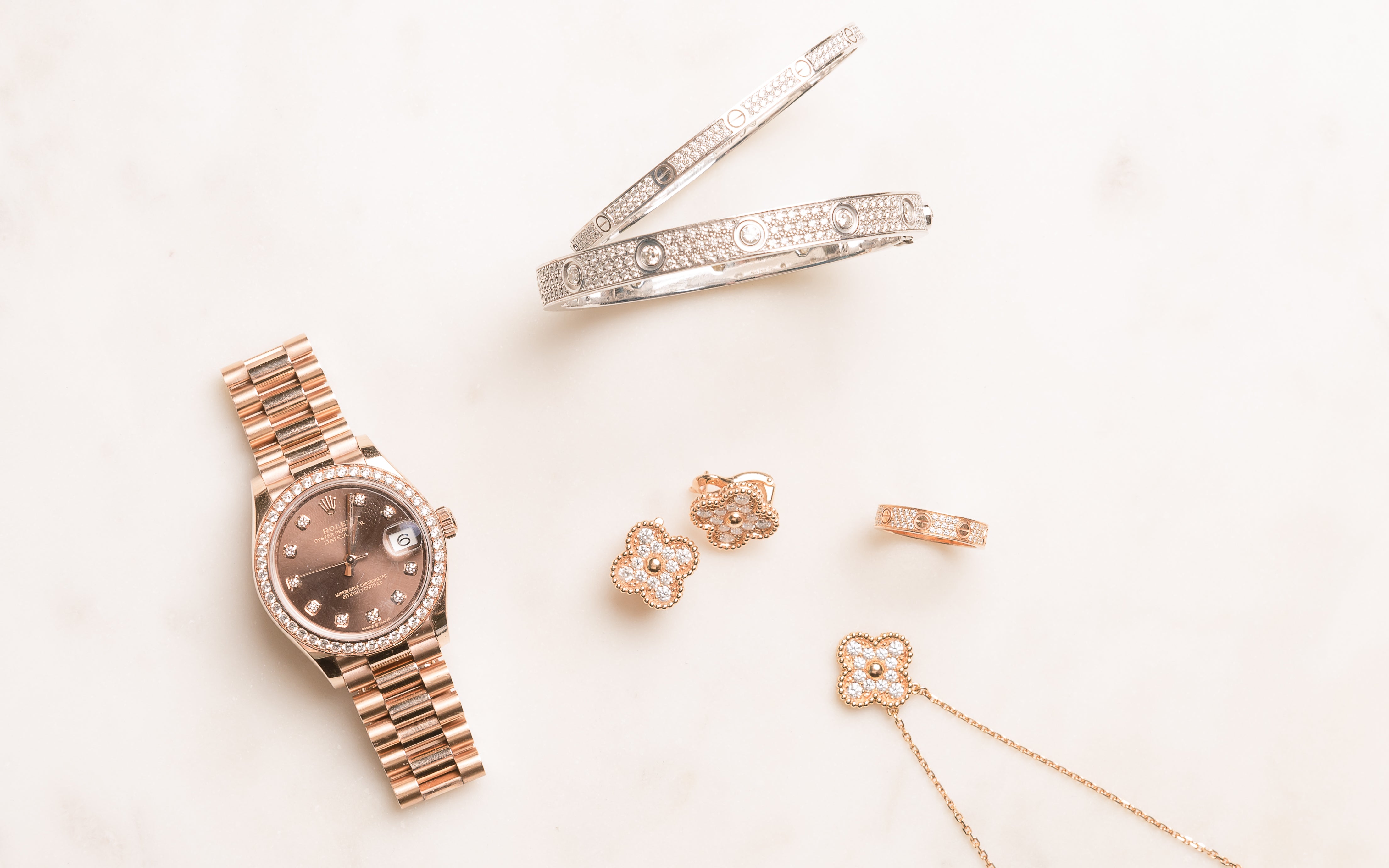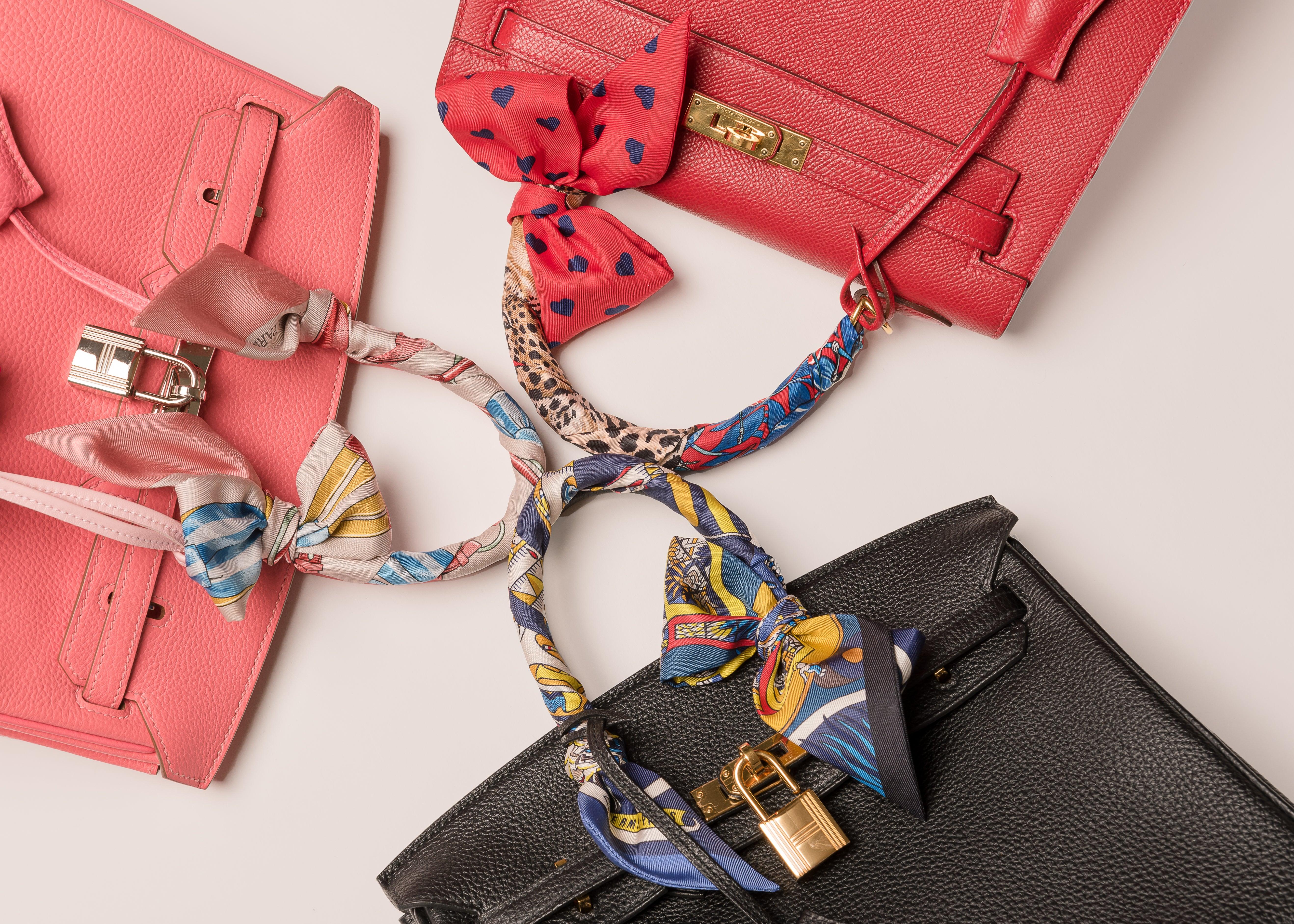Maximizing Your Return: Tips for Consigning Luxury Items - Expert Strategies for Success

Consigning luxury items can be a great way to make money from high-end goods you no longer need. This process involves partnering with a consignment shop to sell your valuable items. These shops specialize in reselling designer clothing, accessories, and other premium products.

Maximizing your return when consigning luxury items requires some planning and know-how. By following certain tips and best practices, you can increase the chances of getting top dollar for your consigned goods. Understanding what sells well, how to prepare items, and which consignment shops to work with can make a big difference in your profits.
1) Choose High-Demand Brands

Selecting popular brands is key when consigning luxury items. High-demand brands often sell faster and for better prices. Shoppers look for well-known names they trust.
Some luxury brands maintain their value better than others. These include Hermès, Chanel, and Louis Vuitton. Their products often sell out due to high demand.
Limited edition items can be especially valuable. Rare pieces from top designers may fetch premium prices. Collectors often seek these unique items.
Consider current fashion trends when choosing what to consign. Popular styles can increase an item's appeal. This may lead to quicker sales and higher returns.
Research which brands are in demand at consignment shops. Some stores specialize in certain designers or types of luxury goods. Matching your items to the right shop can boost your chances of a good sale.
Remember that brand popularity can change over time. Stay informed about the luxury market to make smart consignment choices. This knowledge can help maximize your returns.
2) Provide Accurate Descriptions
When consigning luxury items, giving precise details is key. Buyers want to know exactly what they're getting.
Measure items carefully and list the dimensions. For clothing, include measurements like chest, waist, and inseam.
Note the item's condition honestly. Mention any flaws, even small ones. This builds trust with potential buyers.
Describe materials accurately. If it's leather, say what kind. For jewelry, list the metal and gemstone types.
Include the brand name, model, and year of production if known. These details can affect an item's value.
Take clear, well-lit photos from multiple angles. Close-ups of logos, tags, and any wear are helpful.
List any extras that come with the item, like dust bags or authentication cards. These can increase the sale price.
Be specific about colors. "Navy blue" is clearer than just "blue." This helps buyers picture the item accurately.
Providing thorough, honest descriptions helps maximize profits and reduces the chance of returns.
3) Invest in Quality Photography
Good photos are key when selling luxury items online. Clear, well-lit pictures show off the item's best features and attract more buyers.
Use a high-quality camera or smartphone to take sharp images. Natural light works best, so shoot near a window or outdoors on a cloudy day. This helps show true colors and details.
Take multiple angles of each item. Include close-ups of any logos, tags, or special details. For clothing, show the front, back, and any unique design elements.
Make sure items are clean and wrinkle-free before photographing. Use a plain background to keep the focus on the product. White or light gray often works well.
If possible, include photos of the item being worn or used. This helps buyers picture themselves with it. For jewelry, show it on a model or mannequin.
Professional photography can be worth the investment for very high-end items. It can make a big difference in how luxury goods are perceived.
Remember, photos are often the first thing buyers see. Good pictures can lead to faster sales and higher prices for consigned luxury items.
4) Understand Market Value
Knowing the true market value of luxury items is key for successful consignment. Sellers should research recent sales of similar items to get an idea of current prices.
Online marketplaces and auction results can provide useful data points. Consulting price guides or appraisers who specialize in specific brands or categories can also give valuable insights.
It's important to factor in the item's condition, age, and rarity. Limited edition or vintage pieces may command higher prices than mass-produced items.
Sellers should be realistic about an item's worth. Overpricing can lead to items sitting unsold, while underpricing leaves money on the table.
Market values can fluctuate based on trends and demand. Staying up-to-date on the luxury resale market helps sellers time their consignments for maximum returns.
Having proof of authenticity and original packaging can increase an item's value. Proper documentation gives buyers confidence and justifies higher prices.
5) Work With Reputable Consignment Shops
Choosing a trustworthy consignment shop is key for getting the best return on luxury items. Look for shops with good reputations and positive customer reviews.
Reputable consignment services often specialize in luxury goods. They have staff trained to authenticate and properly value high-end items.
Ask about the shop's pricing and payment policies. Many take 40-60% of the selling price. Make sure you understand their fee structure before consigning.
Check how the shop displays and markets items. The best shops showcase luxury pieces well to attract buyers. They may use professional photos and detailed descriptions.
Find out about the shop's sales tracking system. Good shops let consignors check on their items' status easily. They provide regular updates on sales and payments.
Consider the shop's customer base. Shops with wealthy clientele may get higher prices for luxury goods. Location can play a big role in a shop's ability to sell pricey items.
Ask about authentication processes. Top shops carefully verify luxury items to protect both sellers and buyers. This builds trust and can lead to better prices.
6) Set Realistic Prices
Setting the right price for luxury items is key to a successful consignment sale. Prices that are too high may deter buyers, while prices that are too low can leave money on the table.
Research is essential for pricing luxury goods correctly. Look up recent sale prices for similar items online and in local consignment shops. This will give a good baseline for what buyers are willing to pay.
Consider the item's condition when setting the price. Brand new or like-new items can command higher prices than those with visible wear and tear. Rare or limited edition pieces may also fetch a premium.
Be willing to negotiate slightly on the price. Many consignment shops build in some wiggle room, allowing for small discounts while still making a profit. This can help close sales faster.
Adjust prices over time if items aren't selling. A gradual price reduction can attract buyers without sacrificing too much profit. This flexible pricing strategy helps move inventory while maximizing returns.
7) Maintain Excellent Item Condition
Keeping luxury items in top shape is crucial for successful consignment. Proper care and storage can significantly increase an item's resale value.
For clothing and accessories, use padded hangers and breathable garment bags. Store them in a cool, dry place away from direct sunlight to prevent fading or damage.
Clean items gently before consigning. Follow care labels carefully and consider professional cleaning for delicate fabrics. Avoid harsh chemicals that might harm the material.
Handle expensive products with care to prevent scratches, dents, or other marks. Use soft cloths for polishing and store items in their original boxes or dust bags when possible.
Address any minor repairs promptly. Replace missing buttons, fix loose stitching, or touch up scuffs on shoes. These small fixes can make a big difference in perceived value.
Keep all original packaging, tags, and certificates of authenticity. These extras often increase an item's appeal to potential buyers and can boost its resale price.
8) Highlight Unique Features
When consigning luxury items, it's crucial to showcase their special qualities. These features set them apart and can increase their value.
Luxury goods often have distinct characteristics that make them desirable. This might include rare materials, expert craftsmanship, or limited edition status.
For designer clothing, point out details like hand-stitching or custom embellishments. Bags may have special hardware or unique linings worth mentioning.
With jewelry, highlight any precious stones, their carat weight, and metal purity. Watches might have complications or movements that add to their appeal.
Don't forget to mention any certificates of authenticity or original packaging. These can significantly boost the item's value.
If the item has a interesting history or previous famous owner, include this information. Provenance can be a key factor in luxury consignment.
By emphasizing these unique aspects, consignors can attract more interest from potential buyers. This strategy helps to maximize the return on luxury items.
9) Be Prepared for Negotiations
When consigning luxury items, being ready for negotiations is key. Sellers should expect potential buyers to try to lower prices. It's important to know the item's value before entering talks.
Research similar items and their recent sale prices. This information helps set a realistic starting point. Remember that consignment shops aim to make a profit too.
Bargaining is common in luxury item sales. Sellers should decide on their lowest acceptable price beforehand. This helps avoid making rash decisions during talks.
Patience is crucial in negotiations. If an offer seems too low, it's okay to walk away. Sometimes, waiting for the right buyer pays off.
Consider the item's condition and any unique features. These factors can influence its value and negotiation power. Highlighting special qualities may justify a higher price.
Flexibility can lead to successful deals. Being open to slight price adjustments or including extras might seal the sale. The goal is finding a balance that works for both parties.
10) Keep Up With Fashion Trends
Staying informed about current fashion trends is key to maximizing returns when consigning luxury items. Trends change quickly, so it's important to be aware of what's in demand.
Fashion magazines, style blogs, and social media platforms are great resources for tracking trends. They often showcase the latest looks from top designers and brands.
Luxury retailers frequently update their collections to reflect current trends. Keeping an eye on their websites and store displays can provide valuable insights.
Paying attention to what celebrities and influencers are wearing can also indicate which items are likely to be in high demand. These figures often set or popularize fashion trends.
Fashion weeks in major cities like Paris, Milan, and New York are important events for spotting upcoming trends. Many luxury brands debut their new collections at these shows.
Consignment shops and resale platforms often have data on which items are selling well. This information can be useful in determining which pieces to consign for the best return.
By staying up-to-date with fashion trends, consigners can make informed decisions about when to sell their luxury items for maximum profit.
Understanding the Consignment Process
Consigning luxury items involves working with specialized stores to sell high-end goods. This process can be rewarding for sellers looking to part with valuable pieces.
Benefits of Consigning Luxury Items
Consignment offers a way to sell expensive products without the hassle of direct sales. It's ideal for those with designer clothes, bags, or jewelry they no longer use.
One key benefit is the potential for higher returns compared to traditional resale methods. Consignment stores often have a customer base willing to pay more for authentic luxury goods.
Another advantage is the ease of the process. The store handles marketing, pricing, and customer interactions. This saves time and effort for the consignor.
Consignment can also provide a steady income stream for those with multiple items to sell. As pieces sell, the consignor receives payments over time.
Choosing the Right Consignment Store
Selecting the right store is crucial for a successful consignment experience. Look for shops that specialize in luxury items and have a good reputation.
Check the store's policies on pricing and commission splits. Some offer higher percentages to consignors, while others may have lower rates but better sales records.
Consider the store's location and target market. A shop in a high-end area may attract more buyers for luxury goods.
Examine the store's authentication process. Reputable consignment shops thoroughly verify items to ensure they're genuine.
Ask about the store's marketing efforts. The best consignment partners actively promote their inventory through various channels.
Lastly, visit the store in person if possible. This gives you a feel for how they present items and interact with customers.
Preparing Your Luxury Items for Consignment
Getting your luxury items ready for consignment takes care and attention to detail. These steps can help you maximize the value of your high-end pieces.
Cleaning and Maintenance Tips
First, assess each item's condition. Look for any dirt, stains, or damage. Clean luxury clothing and accessories gently using appropriate methods:
- For leather goods: Use a soft, damp cloth to wipe surfaces. Apply leather conditioner to prevent drying and cracking.
- For jewelry: Clean with a soft brush and mild soap solution. Avoid harsh chemicals.
- For designer clothing: Follow care labels closely. Consider professional dry cleaning for delicate fabrics.
Fix any minor issues like loose buttons or small tears. Polish metal hardware on bags and shoes. Store items properly to maintain their shape and condition.
Documenting Provenance and Authenticity
Gather all original packaging, receipts, and certificates of authenticity. These documents can increase an item's resale value.
Take clear, well-lit photos of the item from multiple angles. Include close-ups of labels, serial numbers, and any unique features.
Create a detailed description of each item, noting:
- Brand name and model
- Year of purchase
- Materials used
- Any special editions or limited releases
- Condition details (e.g. "like new," "gently used")
Keep a record of any repairs or alterations. This transparency builds trust with potential buyers.
Maximizing Your Return
Getting top dollar for consigned luxury items takes strategic pricing and smart marketing. These approaches help attract buyers and boost sale prices.
Pricing Strategies for Luxury Items
Set prices based on brand, condition, and market demand. Research recent sale prices of similar items. Price slightly below retail for nearly-new pieces. Factor in any flaws or wear.
For very rare or collectible items, consider an auction format. This can drive up prices through competitive bidding. Set a reserve price to ensure a minimum return.
Changing the selling price affects quantity sold. Test different price points to find the sweet spot. Start higher and gradually lower if needed.
Be open to reasonable offers. Negotiate firmly but stay flexible. Walking away from a fair offer may mean a long wait for another buyer.
Marketing and Promotion Techniques
High-quality photos are crucial. Show items from multiple angles in good lighting. Highlight unique details and any brand markings.
Write detailed, accurate descriptions. List materials, measurements, and condition. Note any flaws honestly. Mention the original retail price if known.
Emphasize scarcity and exclusivity. Point out limited editions or discontinued styles. Share interesting brand history or celebrity connections.
Target the right audience through niche luxury resale sites and social media. Use relevant hashtags to increase visibility. Consider paid ads to reach serious collectors.
Offer excellent customer service. Respond quickly to questions. Be transparent about shipping and return policies.
Frequently Asked Questions
Consigning luxury items involves careful planning and knowledge of the market. These questions address key aspects of the consignment process and strategies for success.
What strategies should be implemented to ensure the best resale value for high-end luxury items?
Keep items in excellent condition. Store them properly to avoid damage. Save original packaging and receipts. Research current market prices. Choose popular brands and styles. Clean and repair items before consignment. Take clear, high-quality photos. Write detailed, accurate descriptions.
What are the legal considerations when consigning designer goods for resale?
Verify item authenticity. Disclose any flaws or repairs. Follow local resale laws. Understand consignment shop policies. Sign a clear consignment agreement. Know your rights as a consignor. Be aware of trademark and copyright laws. Report income from sales to tax authorities.
Can you provide tips on how to authenticate luxury items before consignment?
Check serial numbers and date codes. Look for quality stitching and materials. Examine logos and hardware. Compare with genuine items. Use online authentication guides. Consult experts or professional authenticators. Be wary of deals that seem too good to be true. Buy from trusted sellers with good reputations.
What factors influence the depreciation or appreciation of luxury goods over time?
Brand reputation affects value. Limited editions often appreciate. Classic styles hold value better. Condition is crucial. Rarity can increase worth. Market trends impact prices. Celebrity endorsements boost appeal. Economic conditions affect luxury spending. Seasonal demand causes fluctuations.
How can potential consignors accurately determine the market demand for their luxury items?
Research recent sale prices. Check online marketplaces. Follow fashion trends. Read industry reports. Consult with consignment shops. Look at social media buzz. Monitor auction results. Consider the item's age and condition. Assess brand popularity and exclusivity.
What are the most effective platforms or avenues for reselling luxury products?
High-end consignment shops offer expertise. Online marketplaces reach wide audiences. Luxury-specific resale sites attract buyers. Social media platforms allow direct sales. Auction houses handle valuable items. Personal networks can lead to sales. Pop-up events create excitement. Designer resale events target fashion lovers.



